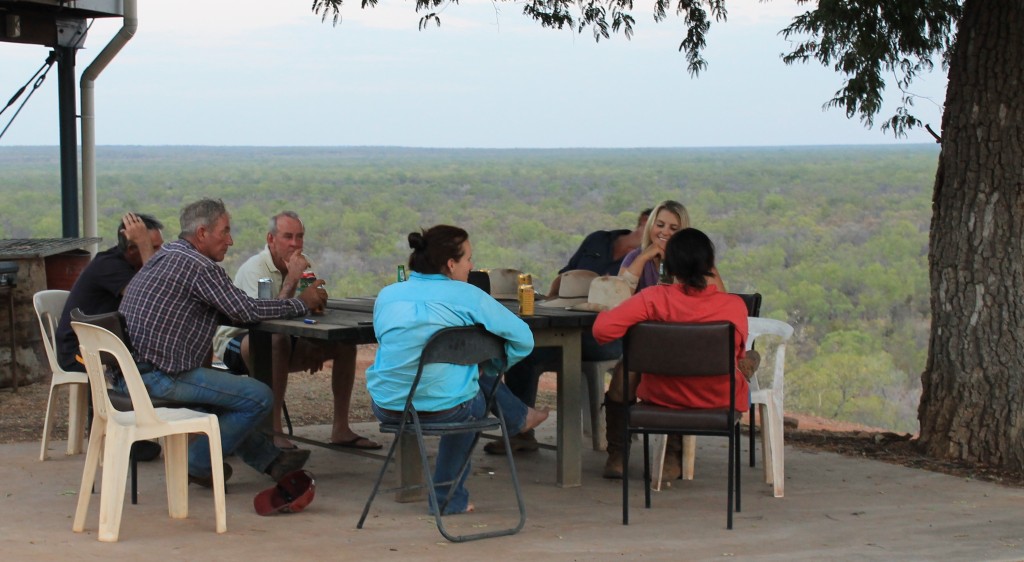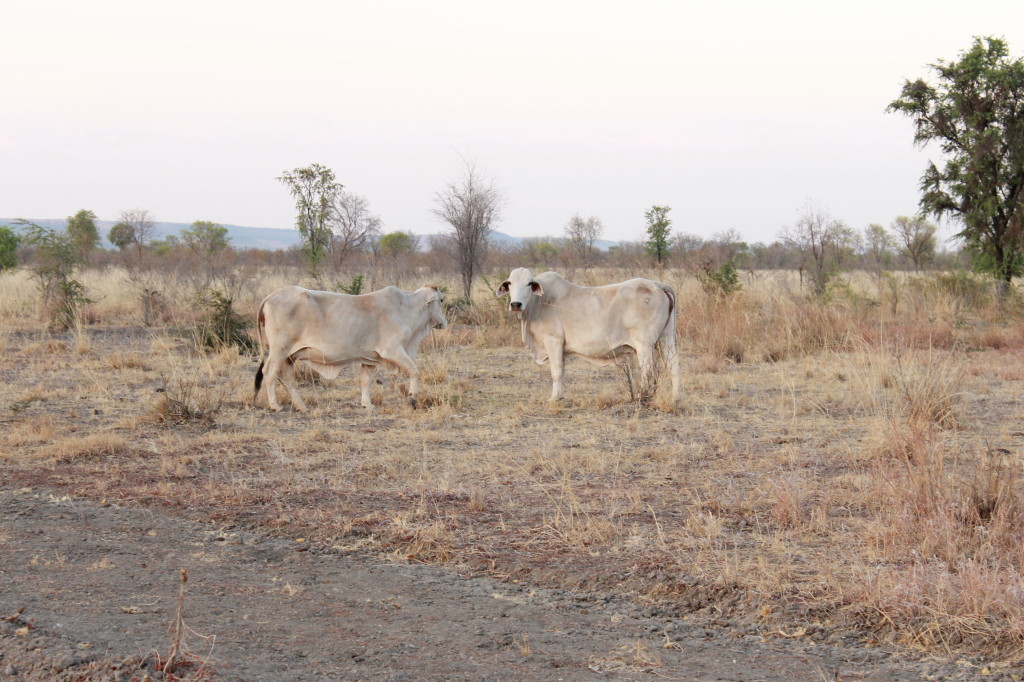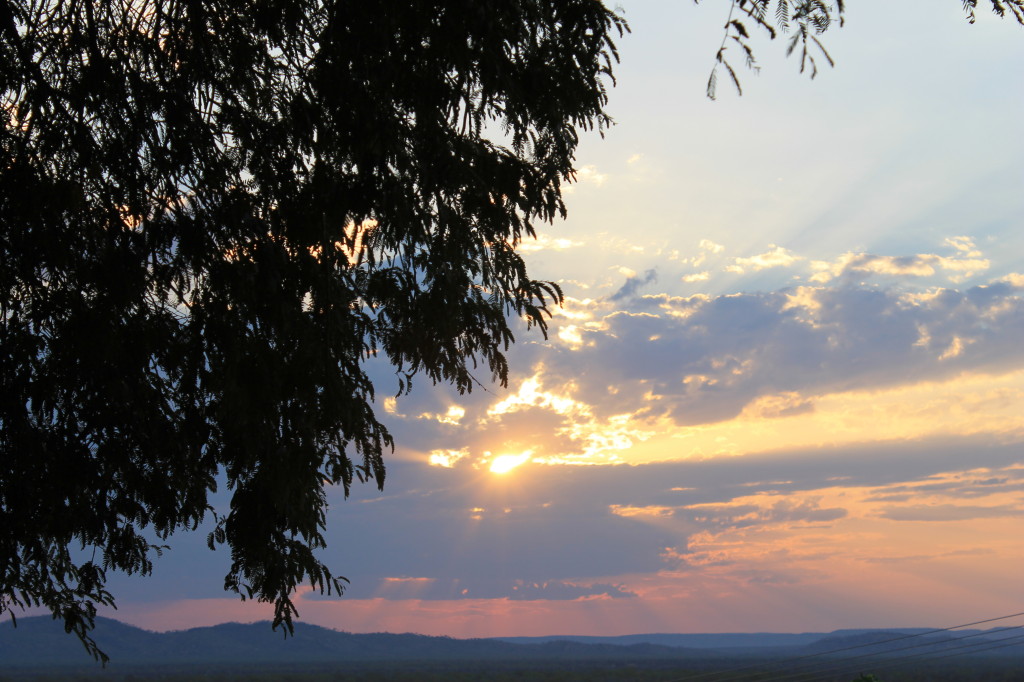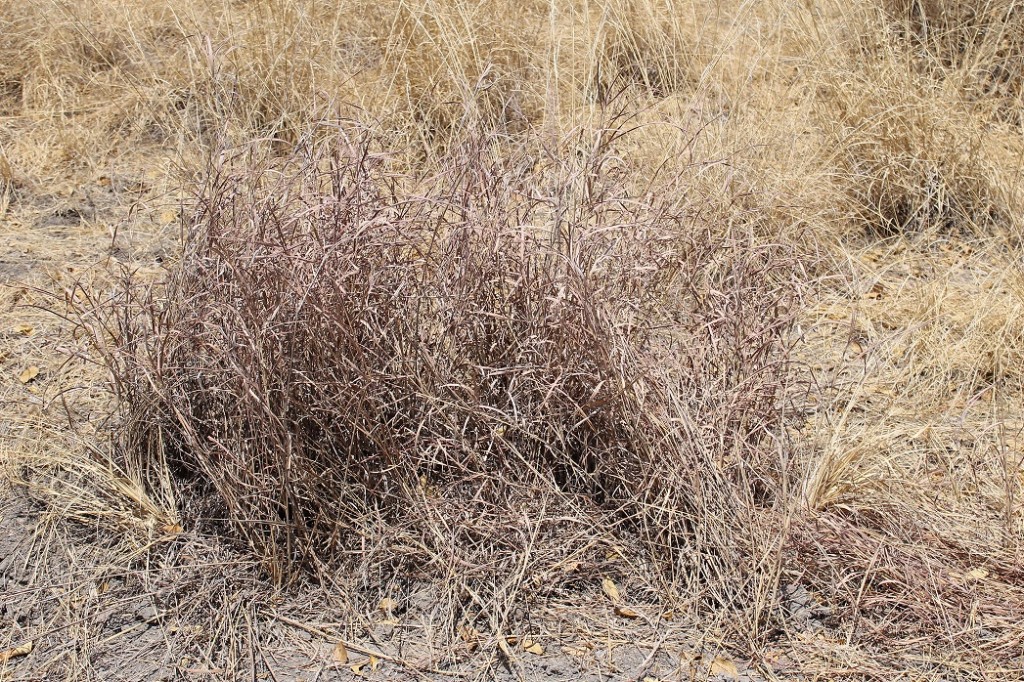Excuse me there… Yes, you in the corner dying
Host: Katherine Research Station
Written by Jodie Ward – Rangeland Research Officer, Katherine Research Station.
Excuse me there . . . Yes, you in the corner dying – what species are you?
As it turns out, pasture species identification in October is not as easy as it is in May or June! At the moment, most of the palatable grasses and forbs have been chewed to some degree by the cattle and wildlife and although the unpalatable species still have most of their leaves, they have lost their seed heads – the most distinguishing feature of the plant! So between the four of us, it wasn’t until after over an hour of discussion (and sometimes what seemed like heated debate), that we all felt confident enough in near dead species recognition (NDSR), that the actual pasture sampling got underway. Loaded up with palmtop computers, 1x1m square quadrants, field guides, and tree basal area gauges, we each aligned ourselves with a specific transect and attempted to work out from the soil type, size of the tussock base, leaf shape, and colour, which species and how much of it, we were looking at. We then traipsed up and down the Shruburn fire trial site repeating this procedure over 300 times each.
What can I say? It was a long, hot day, and we didn’t get it all done. Upon reflection, all four of us would have had to have been working at the speed of light to finish both the red soil and black soil Shruburn sites today, but that’s ok, it just means we will have to finish it off tomorrow before we start burning. So while we’re all in this somewhat defeated mood, now would probably be a good time to remind ourselves why we are actually doing what we’re doing.
 Enjoying a relaxing beverage after a long day pasture sampling with the rest of the Kidman Team.
Enjoying a relaxing beverage after a long day pasture sampling with the rest of the Kidman Team.
Since European settlement in the Victoria River District (VRD), the landscape has changed. What used to be largely treeless black soil plains are now home to significantly more woody species. This is likely due to the fact that when cattle were introduced into the region there were no bores and few fences causing cattle to be completely dependent on natural water sources. Over time, with natural population increases in the cattle herds, areas close to water, and fertile country such as the black soil plains were overgrazed, leaving no competition for tree seedlings.
With most of the grass removed by grazing animals, not only were more woody seedlings popping up in areas where they had not previously been, but there was also no understory vegetation to carry a wildfire which is what would usually keep the woody species population in check. With all of these introductions and disruptions with nature’s cycle, the landscape in the VRD changed, causing it to no longer be as productive as it once was.
While still considered prime cattle breeding country, the on-going battle between woody and pasture species in the VRD continues, demonstrating that the decisions we make today might not affect us until tomorrow. And this is what the Kidman Springs long term fire trial (aka Shruburn) is all about – trying to work out what burning strategy is best to not only reduce woody species invasion, but also to manage pasture composition.
As mentioned yesterday, there are a number of treatment groups in this trial. There is one site on black soil and one site on red soil. Each site contains 16 plots, some are burnt every two, four and six years, while others are not burnt at all. As well as this, half of the plots that are burnt every two years are burnt early in the dry season (around June) for what’s known as a cool burn as the grasses are still green and don’t burn very well, and half are burnt towards the end of the dry season (usually in October) to get a hotter burn, when plants are dry and crisp. The same burning strategies are applied to the four and six yearly burn plots as well.
 We might be lucky to get a burn in some areas as the fuel load may be too low.
We might be lucky to get a burn in some areas as the fuel load may be too low.
And that’s why we’re here at Kidman Springs, doing what we’re doing. Investigating how to use fire to control woods species and manage pasture composition. By sampling today and getting an estimate of how much has been grazed since we last measured it in June, and what pasture species the cattle are and aren’t eating, we can get an idea of how previous burning treatments have affected the current fuel load and species composition.
So with that in mind, I’m signing off for today as tomorrow is going to be a full on day with smoke, firebug fuel and anxious eyes searching for wayward embers – it’s far too dry to risk a wildfire at the moment! Fingers crossed we don’t burn the neighbours out!!
Cheers,
Jodie
PS – If you are interested in this topic, a great book to read is “Slower than the eye can see” by Darrell Lewis, which features repeat photography monitoring techniques to show how the region has changed over time.
 Fellow grass counter, ready to get cracking!
Fellow grass counter, ready to get cracking!
 Sunset beers under the Tree of Knowledge at Kidman Springs. Best way to finish a day.
Sunset beers under the Tree of Knowledge at Kidman Springs. Best way to finish a day.

